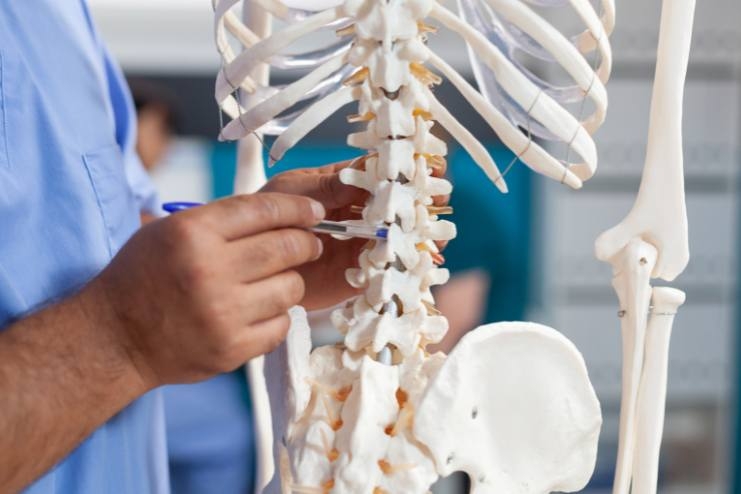
(Image source from: Canva.com)
Osteoporosis is a disease that causes bones to become brittle and prone to breaking. If left untreated, the disease worsens over time and is sometimes called a “silent disease” because no symptoms appear until a fracture occurs. When this condition occurs, the bones become weakened, lose their density, and are no longer able to function as a support system for the body. Therefore, the risk of injury and fracture increases. Dr. Virendra Modenor, MBBS, MS(ORTHO), FIJR, FIAS. Arthroscopy and Joint Replacement Surgery at Apollo Spectra Hospital, Hyderabad says, “Osteoporosis mainly affects older people, especially postmenopausal women, but to prevent and reduce it, maintaining stronger and healthier bones is essential.” Without proper diet and nutrient intake, a sedentary lifestyle can lead to osteoporosis over time. Therefore, when bones become tender or brittle, it can lead to falls or minor traumatic fractures, back pain, loss of height and stooped posture, which require immediate medical attention.
Age: Bone density naturally decreases with age. It can begin in the mid-30s, with the incidence being more common in postmenopausal women. This is associated with a decrease in estrogen levels in the body. Therefore, age is a major risk factor for osteoporosis. This is quite common as we get older. Although age is a crucial factor, the risks associated with osteoporosis can be reduced by maintaining bone health and density. Gender also plays a large role in the risk of osteoporosis. Women are more susceptible to osteoporosis than men. Generally, this can be caused by a significant drop in estrogen levels during menopause, which accelerates bone loss and causes bones to become smaller and thinner. In comparison, men lose bone mass more slowly.
Lifestyle: Lifestyle factors such as diet, exercise and smoking/alcohol habits have been shown to greatly influence the risk of osteoporosis. A sedentary lifestyle, poor diet, smoking, or excessive alcohol consumption can contribute to the formation of weak bones. These are very important factors. By understanding them, you can take the necessary steps to protect your bone health.
Additionally, a family history of osteoporosis or bone fractures can increase a person's risk.
Prevention Strategies: Building Strong Bones: Prevention of osteoporosis requires lifestyle choices and sometimes medical interventions to maintain healthy bones. People with osteoporosis symptoms can relieve their symptoms with proven and effective strategies, including:
Balanced diet: Calcium and vitamin D in foods such as dairy products, leafy greens and fortified foods promote bone formation. These foods are very important for maintaining bone mass and therefore general bone health.
Regular exercise: Weight-bearing and resistance exercises such as walking, jogging and weight lifting strengthen bones. Exercise improves balance and coordination and reduces falls.
Avoiding smoking and alcohol: Smoking and excessive alcohol consumption weaken bones and increase the risk of fractures. Reducing or avoiding these bad habits can go a long way toward healthier bones.
Bone mineral density screening: Routine bone mineral density testing should be performed more frequently in high-risk populations to detect early signs of osteoporosis. The sooner you are tested for the condition, the sooner your doctor can begin treatment to prevent further damage. Osteoporosis in India is due to malnutrition, low calcium intake and limited sun exposure. Cultural habits and dietary factors can further deteriorate due to lack of awareness and negatively impact bone health. In addition, there is widespread deficiency of calcium and vitamin D (approximately 76%) in the Indian population. In addition, a sedentary lifestyle with minimal stress enhances the effect.
Therefore, a combination of a healthy diet, regular exercise, lifestyle changes and medical interventions tailored to individual needs is the basis for effective treatment of osteoporosis. Regular checkups and early intervention are important to reduce the impact of this silent disease. After all, these are steps you can take not only to prevent osteoporosis, but also to ensure your overall health.







